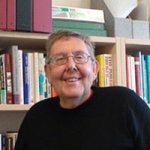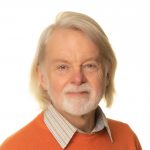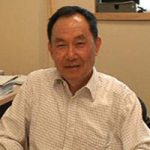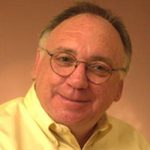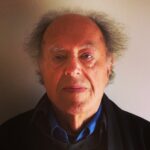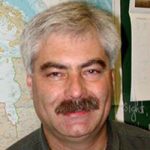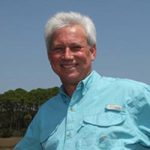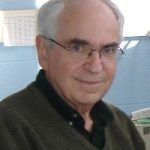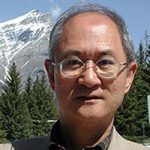Information Box Group
Vera Chouinard
Professor Emeritus
Hello!
I am a radical and feminist geographer and disability studies scholar with interests in housing issues, the marginalization of diverse people in and beyond the academy, state restructuring, law, and disability in the global South and North. I am also interested in ableism as a regime of power in global capitalism—something inspired by a lengthy struggle for accommodation of my needs as a professor disabled by multiple illnesses. I also reflected the realization as well that many other disabled people were in far more disadvantaged circumstances than their academic counterparts. It was time for us to shed more light on this.
I recently retired but remain active in research and writing, serving on graduate supervisory and examining committees, and reviewing articles for journals. I will consider other options—feel free to ask.
My new book Re-Mapping an Ableist World will be published soon by University of Toronto Press, If you share my interests or are curious to find out more I hope you’ll read it!
Alan Dickin
Professor Emeritus
Dr. Alan Dickin research objective is to reconstruct the geological evolution of the Grenville Province of the Canadian Shield. The Grenville has been the most poorly understood province of the Shield, but Nd isotope mapping (Dickin, 2000) has now identified the major crustal terranes that make up the province. My current research involves detailed mapping of individual terrane boundaries in order to understand their geological history, and thereby reconstruct the accretionary growth of the Shield.
Carolyn Eyles
Professor Emeritus
Jointly in SEES and School of Interdisciplinary Science
Dr. Carolyn Eyles was the former Director of the Integrated Science Program and is a Professor in the School of Interdisciplinary Science and the School of Geography & Earth Sciences. She holds a B.Sc. in Environmental Sciences from the University of East Anglia, a postgraduate certificate of Education from the University of Newcastle upon Tyne, and an M.Sc. and Ph.D. in geology from the University of Toronto. Her research interests lie in the fields of glacial sedimentology and environmental geology, and she has worked extensively in Alaska, Australia, Brazil, Iceland, Norway, Great Britain and Canada. She has over 75 publications in peer-reviewed journals and books and has co-authored two first year geoscience textbooks. Dr. Eyles is a practicing Professional Geoscientist of Ontario (P.Geo), and is a member of the Geological Society of America, the American Geophysical Union, and the American Geological Institute. Dr. Eyles is a 3M National Teaching Fellow and has won numerous teaching awards including an OCUFA Teaching Award, an Ontario Undergraduate Student Alliance Teaching Award, and the McMaster President’s Award for Excellence in Instruction. Her current teaching duties include Earth Science components of interdisciplinary courses in the Integrated Science program and senior/graduate level courses in glacial sedimentology. She chaired the committee that designed and developed the interdisciplinary Honours B.Sc. Integrated Science Program and served as the program Director from 2009-2015.

Carolyn Eyles
Professor Emeritus
Jointly in SEES and School of Interdisciplinary Science
John Eyles
Professor Emeritus
Dr. John Eyles is a Distinguished University Professor at McMaster. After receiving his PhD in Science and working in the University of London, he came to McMaster in 1988. Based in Geography and Earth Sciences, he holds appointments in Clinical Epidemiology and Biostatistics, Sociology and the Centre for Health Economics and Policy analysis. His main research interests lie in environmental influences on human health and access to health care resources. He has published widely in these areas. He has served on several advisory committees at the local, provincial and national levels, primarily with the role of science in public policy. He has recently begun (again) working internationally in South Africa and India.
Richard Harris
Professor Emeritus
I retired in 2019 but remain active in research and writing.
I am interested in how the built environment has reflected and shaped our lives, with particular reference to dwellings and residential environments. The influence of the built environment often becomes apparent, and also changes, over long periods of time, and I have found it fruitful to undertake historical research as well as studies of the present. (I am an Associate of the Department of History at McMaster.) Dwellings frame much of our daily life and offer a valuable prism through which to study social, cultural, and economic change.
I have used, and am using, housing as a prism in two contexts:
- The history of housing, neighbourhoods and suburbs in North America in the twentieth century. By studying the linkages between production and consumption of these environments it is possible to ground, and extend, recent debates about the cultural construction of the economy, and about class and gender differences in the meaning of consumption. The most recent work coming out of this research is What’s in a Name? Talking about Urban Peripheries (edited with Charlotte Vorms) (Toronto, 2017). A companion volume, The Urban Land Market (coedited with Ute Lehrer) will be published in 2018. My book projects at present are a survey of How Cities Matter, and A History of Canadian Urban Neighbourhoods since the 1880s.
- The current housing scene in Hamilton, Ontario, paying particular attention to the character of the rental stock. Students have interviewed landlords and tenants, and are undertaking an analysis of the growth of condominiums and of patterns of ownership of the rental housing stock. Projected research will examine social and affordable housing. The results of these studies are being interpreted in the context of an analysis of the changing social geography of hamilton since 1970. This research is being undertaken in association with the Neighbourhood Change Research Project, directed by David Hulchanski at the University of Toronto. This project is examining neighbourhood change in seven Canadian cities.
Kao-Lee Liaw
Professor Emeritus
Since obtaining my Ph. D. degree from Clark University in the United States in 1974, my professional career has been sustained by my belief that mathematics and statistics are useful for achieving insights into real-world problems. This is reflected in the title of my dissertation (An Application of Simultaneous Linear Difference and Differential Equations to the Analysis of Interregional Population Dynamics) and in the use of various multivariate statistical models in my research.
I consider myself to be a Population Geographer and a Demographer. The substantive scope of my research and teaching covers mainly internal and international migration processes and partly death and birth processes. The geographical areas of my research interests span more than half a dozen countries, with Canada, the United States, and Japan being the main ones.
After becoming a Professor Emeritus in 2010, I have not only continued migration research but also broadened my research into medical and soil sciences. In the new fields, I have participated in pre-existing research teams, in which the high-quality data gave me the opportunities to continue developing my statistical skills for achieving greater insights into real-world problems (e.g. mortality risks of ICU patients and emissions of CO2 from soil).
Bill Morris
Professor Emeritus
Bill Morris, Professor, School of Earth, Environment & Society. His research interests include:
- Application of potential field geophysics and remote sensing techniques to mineral and oil exploration problems.
- Potential field modelling and image analysis.
- 3 Dimensional geological and geophysical modelling
- Data integration and remote predictive geological mapping
- Borehole magnetics surveys for navigation, and subsurface geological modelling
- Application of paleomagnetic, and physical rock property techniques for applications in oil and mineral exploration.
Yorgos Papageorgiou
Professor Emeritus
Yorgos Papageorgiou received his diploma in architecture from the National Technical University of Athens in 1959, his M.C.P. in 1967 and his Ph.D. in 1970, both from the Ohio State University. Between 1963 and 1965 he also attended the Graduate School of Ekistics in Athens. During his studies and throughout his subsequent academic career he has been mainly preoccupied with the spatial organisation of human activity. But the path he took from architecture, to urban design and planning, to economic geography, marks a gradual shift from the small scale to the large and from the applied to the theoretical.
Between 1965 and 1972 he was actively involved with the Architecture and Ekistics Group of Athens. He joined the department of geography at McMaster University in 1970. From 1989 he held a joint appointment with the department of economics. He retired in 2001. For about fifteen years and until 2005 he devoted some of his time to Thirty Bench Wines in the Niagara peninsula as a co-owner and winemaker.
He has visited several universities and institutes during his academic career, including the National Research Foundation of Athens, the Institute of Geography and Spatial Organisation of the Polish Academy of Sciences, the University of California at Santa Barbara, the Universite Catholique de Louvain, the Committee for Systems Analysis of the USSR Academy of Sciences, Erasmus University, the Universite de Bourgogne, the Instituto Ricerche Economico-Sociali del Piemonte, Tilburg University, the National Technical University of Athens, the Politechnico di Torino and Tel-Aviv University. Recognitions for his work include two honorary doctorates (from the Universite Catholique de Louvain and the University of the Aegean) and the induction as a Fellow of the Regional Science Association International.
He has had the good fortune of working with excellent people for many years, and the benefit from these collaborations is clearly reflected throughout his academic work. He generalised the negative exponential density function from a monocentric to a polycentric framework (see G1-3 in Selected Publications) and provided a theoretical rationale for both in E5 and C2 respectively. He pioneered the field on agglomeration (see R3,4, E1,2,12 and C1) and proposed an explanation for the globally observed catastrophic growth of large cities in G7. He developed innovative ways of dealing with the impact of uncertainty and heterogeneity in tastes on urban equilibrium structure and location theory (see E3, R6-8 and G18). He contributed to the study of regional population dynamics by combining evolutionary migration models (mainly drawn from physics) with stochastic utility theory in G12,13. He applied this method to the Canadian regional population system and studied its disequilibrium dynamics in G19,20. Using the theory of extreme-value statistics, he developed in G17 a method that derives from first principles various discrete-choice models either in discrete or in continuous space, including the multinomial logit. He developed models for the analysis of policy issues at the urban, regional and international level (see E7,11 and R11-13). Finally, he has struggled with some fundamental problems (see R5,9, G15 and E6,8). He currently works primarily on urban origins (see, for example, C1) and on imperfect public choice.
The price he paid for working across disciplines is that he had to settle on a margin, never quite accepted by those in another discipline, nor quite rejected by those in his own discipline.
Jack Rink
Professor Emeritus
Dr. Jack Rink came to McMaster University in 1992 after completing his Ph.D. at Florida State University and an NSF-NATO Postdoctoral Fellowship at the University of Cambridge, where he began his career in geochronology. Dr. Rink has won teaching awards and a research excellence award in his time at McMaster. His early work in concert with archaeologists and palaeontologists focused on the dating Palaeolithic sites in the Middle East, Europe, China and Indonesia. His more famous exploits include dating of Homo floresiensis (the hobbit) and Gigantopithecus blackii fossils (the latter being considered by some to be relevant to the Bigfoot/Yeti hypothesis). His more recent work involves dating coastal landforms of Holocene and Pleistocene age, and magnetic navigation by sea turtles. He has organized more than 30 international scientific expeditions. Beyond utilizing dating techniques, he has participated in the development of a dating technique for pushing the time range of quartz-sand dating methods for coastal processes into the Pliocene.
Dr. Jack Rink research interests involve luminescence emission and magnetic resonance properties of minerals and biominerals, which are applied to problems in geochronology of the young earth, especially young coastal systems. He mainly uses electron spin resonance dating and luminescence dating as tools in this work, but is also involved in developing better dating methodologies to solve current problems in these areas. His newest area of interest is the use of luminescence properties of minerals to study sand transport in coastal systems, which spans the fields of coastal engineering, landscape evolution, storm recurrence frequency and shipwreck preservation issues in underwater archaeological sites.
Henry Schwarcz
Professor Emeritus
CURRENT RESEARH PROJECTS
Studies of Bone
Our area of research is the investigation of the fundamental properties of bone from many aspects. Bone is the material that bones are made of. It is a natural composite material in which a strong, brittle crystalline material is woven together with a soft, weak material to produce a composite that is strong and resilient. The strong component is a form of the geological mineral apatite, a calcium phosphate, while the soft material is collagen in the form of fibers about 50 nanometers in diameter. Our work focuses on the mineral component and how it is assembled into this marvelous composite. We are working on a number of specific project to investigate this.
Ultrastructure of bone
The crystals of apatite in bone are only 5 nanometers (nm) thick and about 30 to 50 nm wide. Therefore they have to be viewed using a transmission electron microscope (TEM). Working at the Canadian Centre for Electron Microscopy (CCEM), we have been studying the details of how these crystals are assembled into bone. Here is a typical image showing how the crystals (dark)

Wrap around the fibrils of collagen (light). The scale bar is 200 nm long. We have seen these structures in bones from every kind of vertebrate (fish, reptiles, mammals) and also similar structures are found in the dentin of teeth. We are are trying to learn how these structures form by using imaging methods developed by materials engineers, including ion milling, focused ion beam (FIB) milling, and various TEM methods: bright field, dark field, HAADF, and electron diffraction. The work is being done in collaboration with Gianluigi Botton (director, CCEM) and Prof. Kathryn Grandfield (Dept of Materials Science and Engineering) along with various undergrad and graduate students (Lucy Luo, Dakota Binkley, Ivan Strakhov).
Particular projects under way include the following:
1. Ultrastructural studies of intertubular dentin in human and other teeth, relation to bone structure (Lucy Luo)
2. Electron energy loss spectroscopy (EELS) of cross sections of bone to localize collagen and other proteins (Lucy Luo, Carmen Andrei, K. Grandfield)
3. Ultrastructural studies of osteoporotic bone to test for nanometer-scale changes in bone structure (I Strakhov M.Sc project, K. Grandfield and HPS; funded by MccMaster Institute for Research in Aging [MIRA])
4. HAADF analysis of FIB sections of bone to identify larger-scale features (V. Vuong, M.Sc, K. Grandfield, H Schwarcz)
Mechanical modeling of bone
Using the model of bone ultrastructure which we have developed (McNally et al ., 2012) a group at the University of Illinois, Urbana-Champaign has been calculating the mechanical behavior of bone under stress. This work is under the direction of Prof. Iwona Jasiuk, Dept. of Mechanical Engineering, UIUC. Their computations suggested that the new model provides a closer fit to the observed properties of bone. The work is in collaboration with students Diab Abueidda and Fereshteh Sabet. Future studies will include using atomic force microscopy to measure the mechanical characteristics of single apatite platelets (“mineral lamellae”) extracted from bone.
Chemical composition of osteons and bone
With advancing age, mammalian bone is gradually replaced by new bone material (remodeling) in the form of cylindrical structures about 150 micrometers (μm) in diameter, called osteons. It is believed that the composition of the bone in these replacement structures differs from that in the replaced primary bone. We are studying this phenomenon, and other related issues, using the electron microprobe (EMP). This device allows us to determine the complete chemical composition of bone at multiple μm-sized spots and track changes in composition across volumes of bone that have grown at different times. The analyses of Ca and P also allow us to learn about variations in the nature of the apatite mineral that is present in bone. This work is being done at Western University in collaboration with Marc Beauchamp, and with McMaster personnel Dakota Binkley (M.Sc candidate), Kathryn Grandfield and HPS.
Other research interests
Stable isotope geochemistry, forensic analyses of human bone, paleodiet of ancient populations, human migration, Quaternary paleoclimate, speleothems
v:* {behavior:url(#default#VML);} o:* {behavior:url(#default#VML);} w:* {behavior:url(#default#VML);} .shape {behavior:url(#default#VML);} Normal 0 false false false false EN-US X-NONE X-NONE /* Style Definitions */ table.MsoNormalTable {mso-style-name:”Table Normal”; mso-tstyle-rowband-size:0; mso-tstyle-colband-size:0; mso-style-noshow:yes; mso-style-priority:99; mso-style-parent:””; mso-padding-alt:0in 5.4pt 0in 5.4pt; mso-para-margin-top:0in; mso-para-margin-right:0in; mso-para-margin-bottom:10.0pt; mso-para-margin-left:0in; line-height:115%; mso-pagination:widow-orphan; font-size:12.0pt; font-family:”Times New Roman”,serif;}
Studies of Bone
Our area of research is the investigation of the fundamental properties of bone from many aspects. Bone is the material that bones are made of. It is a natural composite material in which a strong, brittle crystalline material is woven together with a soft, weak material to produce a composite that is strong and resilient. The strong component is a form of the geological mineral apatite, a calcium phosphate, while the soft material is collagen in the form of fibers about 50 nanometers in diameter. Our work focuses on the mineral component and how it is assembled into this marvelous composite. We are working on a number of specific project to investigate this.
Ultrastructure of bone
 The crystals of apatite in bone are only 5 nanometers (nm) thick and about 30 to 50 nm wide. Therefore they have to be viewed using a transmission electron microscope (TEM). Working at the Canadian Centre for Electron Microscopy (CCEM), we have been studying the details of how these crystals are assembled into bone. Here is a typical image showing how the crystals (dark)
The crystals of apatite in bone are only 5 nanometers (nm) thick and about 30 to 50 nm wide. Therefore they have to be viewed using a transmission electron microscope (TEM). Working at the Canadian Centre for Electron Microscopy (CCEM), we have been studying the details of how these crystals are assembled into bone. Here is a typical image showing how the crystals (dark)
Wrap around the fibrils of collagen (light). The scale bar is 200 nm long. We have seen these structures in bones from every kind of vertebrate (fish, reptiles, mammals) and also similar structures are found in the dentin of teeth. We are are trying to learn how these structures form by using imaging methods developed by materials engineers, including ion milling, focused ion beam (FIB) milling, and various TEM methods: bright field, dark field, HAADF, and electron diffraction. The work is being done in collaboration with Gianluigi Botton (director, CCEM) and Prof. Kathryn Grandfield (Dept of Materials Science and Engineering) along with various undergrad and graduate students (Lucy Luo, Dakota Binkley, Ivan Strakhov).
Particular projects under way include the following:
1. Ultrastructural studies of intertubular dentin in human and other teeth, relation to bone structure (Lucy Luo)
2. Electron energy loss spectroscopy (EELS) of cross sections of bone to localize collagen and other proteins (Lucy Luo, Carmen Andrei, K. Grandfield)
3. Ultrastructural studies of osteoporotic bone to test for nanometer-scale changes in bone structure (I Strakhov M.Sc project, K. Grandfield and HPS; funded by MccMaster Institute for Research in Aging [MIRA])
4. HAADF analysis of FIB sections of bone to identify larger-scale features (V. Vuong, M.Sc, K. Grandfield, H Schwarcz)
Mechanical modeling of bone
Using the model of bone ultrastructure which we have developed (McNally et al ., 2012) a group at the University of Illinois, Urbana-Champaign has been calculating the mechanical behavior of bone under stress. This work is under the direction of Prof. Iwona Jasiuk, Dept. of Mechanical Engineering, UIUC. Their computations suggested that the new model provides a closer fit to the observed properties of bone. The work is in collaboration with students Diab Abueidda and Fereshteh Sabet. Future studies will include using atomic force microscopy to measure the mechanical characteristics of single apatite platelets (“mineral lamellae”) extracted from bone.
Chemical composition of osteons and bone
With advancing age, mammalian bone is gradually replaced by new bone material (remodeling) in the form of cylindrical structures about 150 micrometers (μm) in diameter, called osteons. It is believed that the composition of the bone in these replacement structures differs from that in the replaced primary bone. We are studying this phenomenon, and other related issues, using the electron microprobe (EMP). This device allows us to determine the complete chemical composition of bone at multiple μm-sized spots and track changes in composition across volumes of bone that have grown at different times. The analyses of Ca and P also allow us to learn about variations in the nature of the apatite mineral that is present in bone. This work is being done at Western University in collaboration with Marc Beauchamp, and with McMaster personnel Dakota Binkley (M.Sc candidate), Kathryn Grandfield and HPS.
Other research interests
Stable isotope geochemistry, forensic analyses of human bone, paleodiet of ancient populations, human migration, Quaternary paleoclimate, speleothems
Hok Woo
Professor Emeritus
Dr. Ming-ko (Hok) Woo studied Geography and Geology at the University of Hong Kong, and obtained his doctoral degree from the University of British Columbia. He is a Professional Hydrologist of the American Institute of Hydrology, a Fellow of the Arctic Institute of North America; and a Fellow of the Royal Canadian Geographical Society. Dr. Woo has conducted field investigations in the far North for four decades, working in a range of environments, from the polar desert of the High Arctic, subapline woodlands in the subarctic, to the extensive wetlands of Hudson Bay Lowlands. He has also studied drought problems in the semi-arid Sahel of northern Nigeria and the Canadian Prairies, soil erosion in subtropical south China, climate variability and hydrology of large-basins in northwestern Canada. He was recognized with the Award for Scholarly Distinction from the Canadian Association of Geographers and with the prestigious Tuzo Wilson Medal from the Canadian Geophysical Union; the latter organization also has established in his honour the Woo Lectures in Hydrology, delivered annually by invited speakers. He was conferred an honorary degree of Doctor of Environmental Studies from the University of Waterloo for his outstanding and pioneering work in the fields of cold-regions hydrology, wetland ecosystems, and hydrological modelling. He takes pride in his former students and research associates who have successfully trained and mentored generations of practitioners and instructors in the fields of Hydrology and Environmental Science.
Vera Chouinard
Professor Emeritus
Hello!
I am a radical and feminist geographer and disability studies scholar with interests in housing issues, the marginalization of diverse people in and beyond the academy, state restructuring, law, and disability in the global South and North. I am also interested in ableism as a regime of power in global capitalism—something inspired by a lengthy struggle for accommodation of my needs as a professor disabled by multiple illnesses. I also reflected the realization as well that many other disabled people were in far more disadvantaged circumstances than their academic counterparts. It was time for us to shed more light on this.
I recently retired but remain active in research and writing, serving on graduate supervisory and examining committees, and reviewing articles for journals. I will consider other options—feel free to ask.
My new book Re-Mapping an Ableist World will be published soon by University of Toronto Press, If you share my interests or are curious to find out more I hope you’ll read it!
Vera Chouinard
Professor Emeritus
Hello!
I am a radical and feminist geographer and disability studies scholar with interests in housing issues, the marginalization of diverse people in and beyond the academy, state restructuring, law, and disability in the global South and North. I am also interested in ableism as a regime of power in global capitalism—something inspired by a lengthy struggle for accommodation of my needs as a professor disabled by multiple illnesses. I also reflected the realization as well that many other disabled people were in far more disadvantaged circumstances than their academic counterparts. It was time for us to shed more light on this.
I recently retired but remain active in research and writing, serving on graduate supervisory and examining committees, and reviewing articles for journals. I will consider other options—feel free to ask.
My new book Re-Mapping an Ableist World will be published soon by University of Toronto Press, If you share my interests or are curious to find out more I hope you’ll read it!
Alan Dickin
Professor Emeritus
Dr. Alan Dickin research objective is to reconstruct the geological evolution of the Grenville Province of the Canadian Shield. The Grenville has been the most poorly understood province of the Shield, but Nd isotope mapping (Dickin, 2000) has now identified the major crustal terranes that make up the province. My current research involves detailed mapping of individual terrane boundaries in order to understand their geological history, and thereby reconstruct the accretionary growth of the Shield.
Alan Dickin
Professor Emeritus
Dr. Alan Dickin research objective is to reconstruct the geological evolution of the Grenville Province of the Canadian Shield. The Grenville has been the most poorly understood province of the Shield, but Nd isotope mapping (Dickin, 2000) has now identified the major crustal terranes that make up the province. My current research involves detailed mapping of individual terrane boundaries in order to understand their geological history, and thereby reconstruct the accretionary growth of the Shield.
Carolyn Eyles
Professor Emeritus
Jointly in SEES and School of Interdisciplinary Science
Dr. Carolyn Eyles was the former Director of the Integrated Science Program and is a Professor in the School of Interdisciplinary Science and the School of Geography & Earth Sciences. She holds a B.Sc. in Environmental Sciences from the University of East Anglia, a postgraduate certificate of Education from the University of Newcastle upon Tyne, and an M.Sc. and Ph.D. in geology from the University of Toronto. Her research interests lie in the fields of glacial sedimentology and environmental geology, and she has worked extensively in Alaska, Australia, Brazil, Iceland, Norway, Great Britain and Canada. She has over 75 publications in peer-reviewed journals and books and has co-authored two first year geoscience textbooks. Dr. Eyles is a practicing Professional Geoscientist of Ontario (P.Geo), and is a member of the Geological Society of America, the American Geophysical Union, and the American Geological Institute. Dr. Eyles is a 3M National Teaching Fellow and has won numerous teaching awards including an OCUFA Teaching Award, an Ontario Undergraduate Student Alliance Teaching Award, and the McMaster President’s Award for Excellence in Instruction. Her current teaching duties include Earth Science components of interdisciplinary courses in the Integrated Science program and senior/graduate level courses in glacial sedimentology. She chaired the committee that designed and developed the interdisciplinary Honours B.Sc. Integrated Science Program and served as the program Director from 2009-2015.
Carolyn Eyles
Professor Emeritus
Jointly in SEES and School of Interdisciplinary Science
Dr. Carolyn Eyles was the former Director of the Integrated Science Program and is a Professor in the School of Interdisciplinary Science and the School of Geography & Earth Sciences. She holds a B.Sc. in Environmental Sciences from the University of East Anglia, a postgraduate certificate of Education from the University of Newcastle upon Tyne, and an M.Sc. and Ph.D. in geology from the University of Toronto. Her research interests lie in the fields of glacial sedimentology and environmental geology, and she has worked extensively in Alaska, Australia, Brazil, Iceland, Norway, Great Britain and Canada. She has over 75 publications in peer-reviewed journals and books and has co-authored two first year geoscience textbooks. Dr. Eyles is a practicing Professional Geoscientist of Ontario (P.Geo), and is a member of the Geological Society of America, the American Geophysical Union, and the American Geological Institute. Dr. Eyles is a 3M National Teaching Fellow and has won numerous teaching awards including an OCUFA Teaching Award, an Ontario Undergraduate Student Alliance Teaching Award, and the McMaster President’s Award for Excellence in Instruction. Her current teaching duties include Earth Science components of interdisciplinary courses in the Integrated Science program and senior/graduate level courses in glacial sedimentology. She chaired the committee that designed and developed the interdisciplinary Honours B.Sc. Integrated Science Program and served as the program Director from 2009-2015.
John Eyles
Professor Emeritus
Dr. John Eyles is a Distinguished University Professor at McMaster. After receiving his PhD in Science and working in the University of London, he came to McMaster in 1988. Based in Geography and Earth Sciences, he holds appointments in Clinical Epidemiology and Biostatistics, Sociology and the Centre for Health Economics and Policy analysis. His main research interests lie in environmental influences on human health and access to health care resources. He has published widely in these areas. He has served on several advisory committees at the local, provincial and national levels, primarily with the role of science in public policy. He has recently begun (again) working internationally in South Africa and India.
John Eyles
Professor Emeritus
Dr. John Eyles is a Distinguished University Professor at McMaster. After receiving his PhD in Science and working in the University of London, he came to McMaster in 1988. Based in Geography and Earth Sciences, he holds appointments in Clinical Epidemiology and Biostatistics, Sociology and the Centre for Health Economics and Policy analysis. His main research interests lie in environmental influences on human health and access to health care resources. He has published widely in these areas. He has served on several advisory committees at the local, provincial and national levels, primarily with the role of science in public policy. He has recently begun (again) working internationally in South Africa and India.
Richard Harris
Professor Emeritus
I retired in 2019 but remain active in research and writing.
I am interested in how the built environment has reflected and shaped our lives, with particular reference to dwellings and residential environments. The influence of the built environment often becomes apparent, and also changes, over long periods of time, and I have found it fruitful to undertake historical research as well as studies of the present. (I am an Associate of the Department of History at McMaster.) Dwellings frame much of our daily life and offer a valuable prism through which to study social, cultural, and economic change.
I have used, and am using, housing as a prism in two contexts:
- The history of housing, neighbourhoods and suburbs in North America in the twentieth century. By studying the linkages between production and consumption of these environments it is possible to ground, and extend, recent debates about the cultural construction of the economy, and about class and gender differences in the meaning of consumption. The most recent work coming out of this research is What’s in a Name? Talking about Urban Peripheries (edited with Charlotte Vorms) (Toronto, 2017). A companion volume, The Urban Land Market (coedited with Ute Lehrer) will be published in 2018. My book projects at present are a survey of How Cities Matter, and A History of Canadian Urban Neighbourhoods since the 1880s.
- The current housing scene in Hamilton, Ontario, paying particular attention to the character of the rental stock. Students have interviewed landlords and tenants, and are undertaking an analysis of the growth of condominiums and of patterns of ownership of the rental housing stock. Projected research will examine social and affordable housing. The results of these studies are being interpreted in the context of an analysis of the changing social geography of hamilton since 1970. This research is being undertaken in association with the Neighbourhood Change Research Project, directed by David Hulchanski at the University of Toronto. This project is examining neighbourhood change in seven Canadian cities.
Richard Harris
Professor Emeritus
I retired in 2019 but remain active in research and writing.
I am interested in how the built environment has reflected and shaped our lives, with particular reference to dwellings and residential environments. The influence of the built environment often becomes apparent, and also changes, over long periods of time, and I have found it fruitful to undertake historical research as well as studies of the present. (I am an Associate of the Department of History at McMaster.) Dwellings frame much of our daily life and offer a valuable prism through which to study social, cultural, and economic change.
I have used, and am using, housing as a prism in two contexts:
- The history of housing, neighbourhoods and suburbs in North America in the twentieth century. By studying the linkages between production and consumption of these environments it is possible to ground, and extend, recent debates about the cultural construction of the economy, and about class and gender differences in the meaning of consumption. The most recent work coming out of this research is What’s in a Name? Talking about Urban Peripheries (edited with Charlotte Vorms) (Toronto, 2017). A companion volume, The Urban Land Market (coedited with Ute Lehrer) will be published in 2018. My book projects at present are a survey of How Cities Matter, and A History of Canadian Urban Neighbourhoods since the 1880s.
- The current housing scene in Hamilton, Ontario, paying particular attention to the character of the rental stock. Students have interviewed landlords and tenants, and are undertaking an analysis of the growth of condominiums and of patterns of ownership of the rental housing stock. Projected research will examine social and affordable housing. The results of these studies are being interpreted in the context of an analysis of the changing social geography of hamilton since 1970. This research is being undertaken in association with the Neighbourhood Change Research Project, directed by David Hulchanski at the University of Toronto. This project is examining neighbourhood change in seven Canadian cities.
Kao-Lee Liaw
Professor Emeritus
Since obtaining my Ph. D. degree from Clark University in the United States in 1974, my professional career has been sustained by my belief that mathematics and statistics are useful for achieving insights into real-world problems. This is reflected in the title of my dissertation (An Application of Simultaneous Linear Difference and Differential Equations to the Analysis of Interregional Population Dynamics) and in the use of various multivariate statistical models in my research.
I consider myself to be a Population Geographer and a Demographer. The substantive scope of my research and teaching covers mainly internal and international migration processes and partly death and birth processes. The geographical areas of my research interests span more than half a dozen countries, with Canada, the United States, and Japan being the main ones.
After becoming a Professor Emeritus in 2010, I have not only continued migration research but also broadened my research into medical and soil sciences. In the new fields, I have participated in pre-existing research teams, in which the high-quality data gave me the opportunities to continue developing my statistical skills for achieving greater insights into real-world problems (e.g. mortality risks of ICU patients and emissions of CO2 from soil).
Kao-Lee Liaw
Professor Emeritus
Since obtaining my Ph. D. degree from Clark University in the United States in 1974, my professional career has been sustained by my belief that mathematics and statistics are useful for achieving insights into real-world problems. This is reflected in the title of my dissertation (An Application of Simultaneous Linear Difference and Differential Equations to the Analysis of Interregional Population Dynamics) and in the use of various multivariate statistical models in my research.
I consider myself to be a Population Geographer and a Demographer. The substantive scope of my research and teaching covers mainly internal and international migration processes and partly death and birth processes. The geographical areas of my research interests span more than half a dozen countries, with Canada, the United States, and Japan being the main ones.
After becoming a Professor Emeritus in 2010, I have not only continued migration research but also broadened my research into medical and soil sciences. In the new fields, I have participated in pre-existing research teams, in which the high-quality data gave me the opportunities to continue developing my statistical skills for achieving greater insights into real-world problems (e.g. mortality risks of ICU patients and emissions of CO2 from soil).
Bill Morris
Professor Emeritus
Bill Morris, Professor, School of Earth, Environment & Society. His research interests include:
- Application of potential field geophysics and remote sensing techniques to mineral and oil exploration problems.
- Potential field modelling and image analysis.
- 3 Dimensional geological and geophysical modelling
- Data integration and remote predictive geological mapping
- Borehole magnetics surveys for navigation, and subsurface geological modelling
- Application of paleomagnetic, and physical rock property techniques for applications in oil and mineral exploration.
Bill Morris
Professor Emeritus
Bill Morris, Professor, School of Earth, Environment & Society. His research interests include:
- Application of potential field geophysics and remote sensing techniques to mineral and oil exploration problems.
- Potential field modelling and image analysis.
- 3 Dimensional geological and geophysical modelling
- Data integration and remote predictive geological mapping
- Borehole magnetics surveys for navigation, and subsurface geological modelling
- Application of paleomagnetic, and physical rock property techniques for applications in oil and mineral exploration.
Yorgos Papageorgiou
Professor Emeritus
Yorgos Papageorgiou received his diploma in architecture from the National Technical University of Athens in 1959, his M.C.P. in 1967 and his Ph.D. in 1970, both from the Ohio State University. Between 1963 and 1965 he also attended the Graduate School of Ekistics in Athens. During his studies and throughout his subsequent academic career he has been mainly preoccupied with the spatial organisation of human activity. But the path he took from architecture, to urban design and planning, to economic geography, marks a gradual shift from the small scale to the large and from the applied to the theoretical.
Between 1965 and 1972 he was actively involved with the Architecture and Ekistics Group of Athens. He joined the department of geography at McMaster University in 1970. From 1989 he held a joint appointment with the department of economics. He retired in 2001. For about fifteen years and until 2005 he devoted some of his time to Thirty Bench Wines in the Niagara peninsula as a co-owner and winemaker.
He has visited several universities and institutes during his academic career, including the National Research Foundation of Athens, the Institute of Geography and Spatial Organisation of the Polish Academy of Sciences, the University of California at Santa Barbara, the Universite Catholique de Louvain, the Committee for Systems Analysis of the USSR Academy of Sciences, Erasmus University, the Universite de Bourgogne, the Instituto Ricerche Economico-Sociali del Piemonte, Tilburg University, the National Technical University of Athens, the Politechnico di Torino and Tel-Aviv University. Recognitions for his work include two honorary doctorates (from the Universite Catholique de Louvain and the University of the Aegean) and the induction as a Fellow of the Regional Science Association International.
He has had the good fortune of working with excellent people for many years, and the benefit from these collaborations is clearly reflected throughout his academic work. He generalised the negative exponential density function from a monocentric to a polycentric framework (see G1-3 in Selected Publications) and provided a theoretical rationale for both in E5 and C2 respectively. He pioneered the field on agglomeration (see R3,4, E1,2,12 and C1) and proposed an explanation for the globally observed catastrophic growth of large cities in G7. He developed innovative ways of dealing with the impact of uncertainty and heterogeneity in tastes on urban equilibrium structure and location theory (see E3, R6-8 and G18). He contributed to the study of regional population dynamics by combining evolutionary migration models (mainly drawn from physics) with stochastic utility theory in G12,13. He applied this method to the Canadian regional population system and studied its disequilibrium dynamics in G19,20. Using the theory of extreme-value statistics, he developed in G17 a method that derives from first principles various discrete-choice models either in discrete or in continuous space, including the multinomial logit. He developed models for the analysis of policy issues at the urban, regional and international level (see E7,11 and R11-13). Finally, he has struggled with some fundamental problems (see R5,9, G15 and E6,8). He currently works primarily on urban origins (see, for example, C1) and on imperfect public choice.
The price he paid for working across disciplines is that he had to settle on a margin, never quite accepted by those in another discipline, nor quite rejected by those in his own discipline.
Yorgos Papageorgiou
Professor Emeritus
Yorgos Papageorgiou received his diploma in architecture from the National Technical University of Athens in 1959, his M.C.P. in 1967 and his Ph.D. in 1970, both from the Ohio State University. Between 1963 and 1965 he also attended the Graduate School of Ekistics in Athens. During his studies and throughout his subsequent academic career he has been mainly preoccupied with the spatial organisation of human activity. But the path he took from architecture, to urban design and planning, to economic geography, marks a gradual shift from the small scale to the large and from the applied to the theoretical.
Between 1965 and 1972 he was actively involved with the Architecture and Ekistics Group of Athens. He joined the department of geography at McMaster University in 1970. From 1989 he held a joint appointment with the department of economics. He retired in 2001. For about fifteen years and until 2005 he devoted some of his time to Thirty Bench Wines in the Niagara peninsula as a co-owner and winemaker.
He has visited several universities and institutes during his academic career, including the National Research Foundation of Athens, the Institute of Geography and Spatial Organisation of the Polish Academy of Sciences, the University of California at Santa Barbara, the Universite Catholique de Louvain, the Committee for Systems Analysis of the USSR Academy of Sciences, Erasmus University, the Universite de Bourgogne, the Instituto Ricerche Economico-Sociali del Piemonte, Tilburg University, the National Technical University of Athens, the Politechnico di Torino and Tel-Aviv University. Recognitions for his work include two honorary doctorates (from the Universite Catholique de Louvain and the University of the Aegean) and the induction as a Fellow of the Regional Science Association International.
He has had the good fortune of working with excellent people for many years, and the benefit from these collaborations is clearly reflected throughout his academic work. He generalised the negative exponential density function from a monocentric to a polycentric framework (see G1-3 in Selected Publications) and provided a theoretical rationale for both in E5 and C2 respectively. He pioneered the field on agglomeration (see R3,4, E1,2,12 and C1) and proposed an explanation for the globally observed catastrophic growth of large cities in G7. He developed innovative ways of dealing with the impact of uncertainty and heterogeneity in tastes on urban equilibrium structure and location theory (see E3, R6-8 and G18). He contributed to the study of regional population dynamics by combining evolutionary migration models (mainly drawn from physics) with stochastic utility theory in G12,13. He applied this method to the Canadian regional population system and studied its disequilibrium dynamics in G19,20. Using the theory of extreme-value statistics, he developed in G17 a method that derives from first principles various discrete-choice models either in discrete or in continuous space, including the multinomial logit. He developed models for the analysis of policy issues at the urban, regional and international level (see E7,11 and R11-13). Finally, he has struggled with some fundamental problems (see R5,9, G15 and E6,8). He currently works primarily on urban origins (see, for example, C1) and on imperfect public choice.
The price he paid for working across disciplines is that he had to settle on a margin, never quite accepted by those in another discipline, nor quite rejected by those in his own discipline.
Jack Rink
Professor Emeritus
Dr. Jack Rink came to McMaster University in 1992 after completing his Ph.D. at Florida State University and an NSF-NATO Postdoctoral Fellowship at the University of Cambridge, where he began his career in geochronology. Dr. Rink has won teaching awards and a research excellence award in his time at McMaster. His early work in concert with archaeologists and palaeontologists focused on the dating Palaeolithic sites in the Middle East, Europe, China and Indonesia. His more famous exploits include dating of Homo floresiensis (the hobbit) and Gigantopithecus blackii fossils (the latter being considered by some to be relevant to the Bigfoot/Yeti hypothesis). His more recent work involves dating coastal landforms of Holocene and Pleistocene age, and magnetic navigation by sea turtles. He has organized more than 30 international scientific expeditions. Beyond utilizing dating techniques, he has participated in the development of a dating technique for pushing the time range of quartz-sand dating methods for coastal processes into the Pliocene.
Dr. Jack Rink research interests involve luminescence emission and magnetic resonance properties of minerals and biominerals, which are applied to problems in geochronology of the young earth, especially young coastal systems. He mainly uses electron spin resonance dating and luminescence dating as tools in this work, but is also involved in developing better dating methodologies to solve current problems in these areas. His newest area of interest is the use of luminescence properties of minerals to study sand transport in coastal systems, which spans the fields of coastal engineering, landscape evolution, storm recurrence frequency and shipwreck preservation issues in underwater archaeological sites.
Jack Rink
Professor Emeritus
Dr. Jack Rink came to McMaster University in 1992 after completing his Ph.D. at Florida State University and an NSF-NATO Postdoctoral Fellowship at the University of Cambridge, where he began his career in geochronology. Dr. Rink has won teaching awards and a research excellence award in his time at McMaster. His early work in concert with archaeologists and palaeontologists focused on the dating Palaeolithic sites in the Middle East, Europe, China and Indonesia. His more famous exploits include dating of Homo floresiensis (the hobbit) and Gigantopithecus blackii fossils (the latter being considered by some to be relevant to the Bigfoot/Yeti hypothesis). His more recent work involves dating coastal landforms of Holocene and Pleistocene age, and magnetic navigation by sea turtles. He has organized more than 30 international scientific expeditions. Beyond utilizing dating techniques, he has participated in the development of a dating technique for pushing the time range of quartz-sand dating methods for coastal processes into the Pliocene.
Dr. Jack Rink research interests involve luminescence emission and magnetic resonance properties of minerals and biominerals, which are applied to problems in geochronology of the young earth, especially young coastal systems. He mainly uses electron spin resonance dating and luminescence dating as tools in this work, but is also involved in developing better dating methodologies to solve current problems in these areas. His newest area of interest is the use of luminescence properties of minerals to study sand transport in coastal systems, which spans the fields of coastal engineering, landscape evolution, storm recurrence frequency and shipwreck preservation issues in underwater archaeological sites.
Henry Schwarcz
Professor Emeritus
CURRENT RESEARH PROJECTS
Studies of Bone
Our area of research is the investigation of the fundamental properties of bone from many aspects. Bone is the material that bones are made of. It is a natural composite material in which a strong, brittle crystalline material is woven together with a soft, weak material to produce a composite that is strong and resilient. The strong component is a form of the geological mineral apatite, a calcium phosphate, while the soft material is collagen in the form of fibers about 50 nanometers in diameter. Our work focuses on the mineral component and how it is assembled into this marvelous composite. We are working on a number of specific project to investigate this.
Ultrastructure of bone
The crystals of apatite in bone are only 5 nanometers (nm) thick and about 30 to 50 nm wide. Therefore they have to be viewed using a transmission electron microscope (TEM). Working at the Canadian Centre for Electron Microscopy (CCEM), we have been studying the details of how these crystals are assembled into bone. Here is a typical image showing how the crystals (dark)

Wrap around the fibrils of collagen (light). The scale bar is 200 nm long. We have seen these structures in bones from every kind of vertebrate (fish, reptiles, mammals) and also similar structures are found in the dentin of teeth. We are are trying to learn how these structures form by using imaging methods developed by materials engineers, including ion milling, focused ion beam (FIB) milling, and various TEM methods: bright field, dark field, HAADF, and electron diffraction. The work is being done in collaboration with Gianluigi Botton (director, CCEM) and Prof. Kathryn Grandfield (Dept of Materials Science and Engineering) along with various undergrad and graduate students (Lucy Luo, Dakota Binkley, Ivan Strakhov).
Particular projects under way include the following:
1. Ultrastructural studies of intertubular dentin in human and other teeth, relation to bone structure (Lucy Luo)
2. Electron energy loss spectroscopy (EELS) of cross sections of bone to localize collagen and other proteins (Lucy Luo, Carmen Andrei, K. Grandfield)
3. Ultrastructural studies of osteoporotic bone to test for nanometer-scale changes in bone structure (I Strakhov M.Sc project, K. Grandfield and HPS; funded by MccMaster Institute for Research in Aging [MIRA])
4. HAADF analysis of FIB sections of bone to identify larger-scale features (V. Vuong, M.Sc, K. Grandfield, H Schwarcz)
Mechanical modeling of bone
Using the model of bone ultrastructure which we have developed (McNally et al ., 2012) a group at the University of Illinois, Urbana-Champaign has been calculating the mechanical behavior of bone under stress. This work is under the direction of Prof. Iwona Jasiuk, Dept. of Mechanical Engineering, UIUC. Their computations suggested that the new model provides a closer fit to the observed properties of bone. The work is in collaboration with students Diab Abueidda and Fereshteh Sabet. Future studies will include using atomic force microscopy to measure the mechanical characteristics of single apatite platelets (“mineral lamellae”) extracted from bone.
Chemical composition of osteons and bone
With advancing age, mammalian bone is gradually replaced by new bone material (remodeling) in the form of cylindrical structures about 150 micrometers (μm) in diameter, called osteons. It is believed that the composition of the bone in these replacement structures differs from that in the replaced primary bone. We are studying this phenomenon, and other related issues, using the electron microprobe (EMP). This device allows us to determine the complete chemical composition of bone at multiple μm-sized spots and track changes in composition across volumes of bone that have grown at different times. The analyses of Ca and P also allow us to learn about variations in the nature of the apatite mineral that is present in bone. This work is being done at Western University in collaboration with Marc Beauchamp, and with McMaster personnel Dakota Binkley (M.Sc candidate), Kathryn Grandfield and HPS.
Other research interests
Stable isotope geochemistry, forensic analyses of human bone, paleodiet of ancient populations, human migration, Quaternary paleoclimate, speleothems
v:* {behavior:url(#default#VML);} o:* {behavior:url(#default#VML);} w:* {behavior:url(#default#VML);} .shape {behavior:url(#default#VML);} Normal 0 false false false false EN-US X-NONE X-NONE /* Style Definitions */ table.MsoNormalTable {mso-style-name:”Table Normal”; mso-tstyle-rowband-size:0; mso-tstyle-colband-size:0; mso-style-noshow:yes; mso-style-priority:99; mso-style-parent:””; mso-padding-alt:0in 5.4pt 0in 5.4pt; mso-para-margin-top:0in; mso-para-margin-right:0in; mso-para-margin-bottom:10.0pt; mso-para-margin-left:0in; line-height:115%; mso-pagination:widow-orphan; font-size:12.0pt; font-family:”Times New Roman”,serif;}
Studies of Bone
Our area of research is the investigation of the fundamental properties of bone from many aspects. Bone is the material that bones are made of. It is a natural composite material in which a strong, brittle crystalline material is woven together with a soft, weak material to produce a composite that is strong and resilient. The strong component is a form of the geological mineral apatite, a calcium phosphate, while the soft material is collagen in the form of fibers about 50 nanometers in diameter. Our work focuses on the mineral component and how it is assembled into this marvelous composite. We are working on a number of specific project to investigate this.
Ultrastructure of bone
 The crystals of apatite in bone are only 5 nanometers (nm) thick and about 30 to 50 nm wide. Therefore they have to be viewed using a transmission electron microscope (TEM). Working at the Canadian Centre for Electron Microscopy (CCEM), we have been studying the details of how these crystals are assembled into bone. Here is a typical image showing how the crystals (dark)
The crystals of apatite in bone are only 5 nanometers (nm) thick and about 30 to 50 nm wide. Therefore they have to be viewed using a transmission electron microscope (TEM). Working at the Canadian Centre for Electron Microscopy (CCEM), we have been studying the details of how these crystals are assembled into bone. Here is a typical image showing how the crystals (dark)
Wrap around the fibrils of collagen (light). The scale bar is 200 nm long. We have seen these structures in bones from every kind of vertebrate (fish, reptiles, mammals) and also similar structures are found in the dentin of teeth. We are are trying to learn how these structures form by using imaging methods developed by materials engineers, including ion milling, focused ion beam (FIB) milling, and various TEM methods: bright field, dark field, HAADF, and electron diffraction. The work is being done in collaboration with Gianluigi Botton (director, CCEM) and Prof. Kathryn Grandfield (Dept of Materials Science and Engineering) along with various undergrad and graduate students (Lucy Luo, Dakota Binkley, Ivan Strakhov).
Particular projects under way include the following:
1. Ultrastructural studies of intertubular dentin in human and other teeth, relation to bone structure (Lucy Luo)
2. Electron energy loss spectroscopy (EELS) of cross sections of bone to localize collagen and other proteins (Lucy Luo, Carmen Andrei, K. Grandfield)
3. Ultrastructural studies of osteoporotic bone to test for nanometer-scale changes in bone structure (I Strakhov M.Sc project, K. Grandfield and HPS; funded by MccMaster Institute for Research in Aging [MIRA])
4. HAADF analysis of FIB sections of bone to identify larger-scale features (V. Vuong, M.Sc, K. Grandfield, H Schwarcz)
Mechanical modeling of bone
Using the model of bone ultrastructure which we have developed (McNally et al ., 2012) a group at the University of Illinois, Urbana-Champaign has been calculating the mechanical behavior of bone under stress. This work is under the direction of Prof. Iwona Jasiuk, Dept. of Mechanical Engineering, UIUC. Their computations suggested that the new model provides a closer fit to the observed properties of bone. The work is in collaboration with students Diab Abueidda and Fereshteh Sabet. Future studies will include using atomic force microscopy to measure the mechanical characteristics of single apatite platelets (“mineral lamellae”) extracted from bone.
Chemical composition of osteons and bone
With advancing age, mammalian bone is gradually replaced by new bone material (remodeling) in the form of cylindrical structures about 150 micrometers (μm) in diameter, called osteons. It is believed that the composition of the bone in these replacement structures differs from that in the replaced primary bone. We are studying this phenomenon, and other related issues, using the electron microprobe (EMP). This device allows us to determine the complete chemical composition of bone at multiple μm-sized spots and track changes in composition across volumes of bone that have grown at different times. The analyses of Ca and P also allow us to learn about variations in the nature of the apatite mineral that is present in bone. This work is being done at Western University in collaboration with Marc Beauchamp, and with McMaster personnel Dakota Binkley (M.Sc candidate), Kathryn Grandfield and HPS.
Other research interests
Stable isotope geochemistry, forensic analyses of human bone, paleodiet of ancient populations, human migration, Quaternary paleoclimate, speleothems
Henry Schwarcz
Professor Emeritus
CURRENT RESEARH PROJECTS
Studies of Bone
Our area of research is the investigation of the fundamental properties of bone from many aspects. Bone is the material that bones are made of. It is a natural composite material in which a strong, brittle crystalline material is woven together with a soft, weak material to produce a composite that is strong and resilient. The strong component is a form of the geological mineral apatite, a calcium phosphate, while the soft material is collagen in the form of fibers about 50 nanometers in diameter. Our work focuses on the mineral component and how it is assembled into this marvelous composite. We are working on a number of specific project to investigate this.
Ultrastructure of bone
The crystals of apatite in bone are only 5 nanometers (nm) thick and about 30 to 50 nm wide. Therefore they have to be viewed using a transmission electron microscope (TEM). Working at the Canadian Centre for Electron Microscopy (CCEM), we have been studying the details of how these crystals are assembled into bone. Here is a typical image showing how the crystals (dark)

Wrap around the fibrils of collagen (light). The scale bar is 200 nm long. We have seen these structures in bones from every kind of vertebrate (fish, reptiles, mammals) and also similar structures are found in the dentin of teeth. We are are trying to learn how these structures form by using imaging methods developed by materials engineers, including ion milling, focused ion beam (FIB) milling, and various TEM methods: bright field, dark field, HAADF, and electron diffraction. The work is being done in collaboration with Gianluigi Botton (director, CCEM) and Prof. Kathryn Grandfield (Dept of Materials Science and Engineering) along with various undergrad and graduate students (Lucy Luo, Dakota Binkley, Ivan Strakhov).
Particular projects under way include the following:
1. Ultrastructural studies of intertubular dentin in human and other teeth, relation to bone structure (Lucy Luo)
2. Electron energy loss spectroscopy (EELS) of cross sections of bone to localize collagen and other proteins (Lucy Luo, Carmen Andrei, K. Grandfield)
3. Ultrastructural studies of osteoporotic bone to test for nanometer-scale changes in bone structure (I Strakhov M.Sc project, K. Grandfield and HPS; funded by MccMaster Institute for Research in Aging [MIRA])
4. HAADF analysis of FIB sections of bone to identify larger-scale features (V. Vuong, M.Sc, K. Grandfield, H Schwarcz)
Mechanical modeling of bone
Using the model of bone ultrastructure which we have developed (McNally et al ., 2012) a group at the University of Illinois, Urbana-Champaign has been calculating the mechanical behavior of bone under stress. This work is under the direction of Prof. Iwona Jasiuk, Dept. of Mechanical Engineering, UIUC. Their computations suggested that the new model provides a closer fit to the observed properties of bone. The work is in collaboration with students Diab Abueidda and Fereshteh Sabet. Future studies will include using atomic force microscopy to measure the mechanical characteristics of single apatite platelets (“mineral lamellae”) extracted from bone.
Chemical composition of osteons and bone
With advancing age, mammalian bone is gradually replaced by new bone material (remodeling) in the form of cylindrical structures about 150 micrometers (μm) in diameter, called osteons. It is believed that the composition of the bone in these replacement structures differs from that in the replaced primary bone. We are studying this phenomenon, and other related issues, using the electron microprobe (EMP). This device allows us to determine the complete chemical composition of bone at multiple μm-sized spots and track changes in composition across volumes of bone that have grown at different times. The analyses of Ca and P also allow us to learn about variations in the nature of the apatite mineral that is present in bone. This work is being done at Western University in collaboration with Marc Beauchamp, and with McMaster personnel Dakota Binkley (M.Sc candidate), Kathryn Grandfield and HPS.
Other research interests
Stable isotope geochemistry, forensic analyses of human bone, paleodiet of ancient populations, human migration, Quaternary paleoclimate, speleothems
v:* {behavior:url(#default#VML);} o:* {behavior:url(#default#VML);} w:* {behavior:url(#default#VML);} .shape {behavior:url(#default#VML);} Normal 0 false false false false EN-US X-NONE X-NONE /* Style Definitions */ table.MsoNormalTable {mso-style-name:”Table Normal”; mso-tstyle-rowband-size:0; mso-tstyle-colband-size:0; mso-style-noshow:yes; mso-style-priority:99; mso-style-parent:””; mso-padding-alt:0in 5.4pt 0in 5.4pt; mso-para-margin-top:0in; mso-para-margin-right:0in; mso-para-margin-bottom:10.0pt; mso-para-margin-left:0in; line-height:115%; mso-pagination:widow-orphan; font-size:12.0pt; font-family:”Times New Roman”,serif;}
Studies of Bone
Our area of research is the investigation of the fundamental properties of bone from many aspects. Bone is the material that bones are made of. It is a natural composite material in which a strong, brittle crystalline material is woven together with a soft, weak material to produce a composite that is strong and resilient. The strong component is a form of the geological mineral apatite, a calcium phosphate, while the soft material is collagen in the form of fibers about 50 nanometers in diameter. Our work focuses on the mineral component and how it is assembled into this marvelous composite. We are working on a number of specific project to investigate this.
Ultrastructure of bone
 The crystals of apatite in bone are only 5 nanometers (nm) thick and about 30 to 50 nm wide. Therefore they have to be viewed using a transmission electron microscope (TEM). Working at the Canadian Centre for Electron Microscopy (CCEM), we have been studying the details of how these crystals are assembled into bone. Here is a typical image showing how the crystals (dark)
The crystals of apatite in bone are only 5 nanometers (nm) thick and about 30 to 50 nm wide. Therefore they have to be viewed using a transmission electron microscope (TEM). Working at the Canadian Centre for Electron Microscopy (CCEM), we have been studying the details of how these crystals are assembled into bone. Here is a typical image showing how the crystals (dark)
Wrap around the fibrils of collagen (light). The scale bar is 200 nm long. We have seen these structures in bones from every kind of vertebrate (fish, reptiles, mammals) and also similar structures are found in the dentin of teeth. We are are trying to learn how these structures form by using imaging methods developed by materials engineers, including ion milling, focused ion beam (FIB) milling, and various TEM methods: bright field, dark field, HAADF, and electron diffraction. The work is being done in collaboration with Gianluigi Botton (director, CCEM) and Prof. Kathryn Grandfield (Dept of Materials Science and Engineering) along with various undergrad and graduate students (Lucy Luo, Dakota Binkley, Ivan Strakhov).
Particular projects under way include the following:
1. Ultrastructural studies of intertubular dentin in human and other teeth, relation to bone structure (Lucy Luo)
2. Electron energy loss spectroscopy (EELS) of cross sections of bone to localize collagen and other proteins (Lucy Luo, Carmen Andrei, K. Grandfield)
3. Ultrastructural studies of osteoporotic bone to test for nanometer-scale changes in bone structure (I Strakhov M.Sc project, K. Grandfield and HPS; funded by MccMaster Institute for Research in Aging [MIRA])
4. HAADF analysis of FIB sections of bone to identify larger-scale features (V. Vuong, M.Sc, K. Grandfield, H Schwarcz)
Mechanical modeling of bone
Using the model of bone ultrastructure which we have developed (McNally et al ., 2012) a group at the University of Illinois, Urbana-Champaign has been calculating the mechanical behavior of bone under stress. This work is under the direction of Prof. Iwona Jasiuk, Dept. of Mechanical Engineering, UIUC. Their computations suggested that the new model provides a closer fit to the observed properties of bone. The work is in collaboration with students Diab Abueidda and Fereshteh Sabet. Future studies will include using atomic force microscopy to measure the mechanical characteristics of single apatite platelets (“mineral lamellae”) extracted from bone.
Chemical composition of osteons and bone
With advancing age, mammalian bone is gradually replaced by new bone material (remodeling) in the form of cylindrical structures about 150 micrometers (μm) in diameter, called osteons. It is believed that the composition of the bone in these replacement structures differs from that in the replaced primary bone. We are studying this phenomenon, and other related issues, using the electron microprobe (EMP). This device allows us to determine the complete chemical composition of bone at multiple μm-sized spots and track changes in composition across volumes of bone that have grown at different times. The analyses of Ca and P also allow us to learn about variations in the nature of the apatite mineral that is present in bone. This work is being done at Western University in collaboration with Marc Beauchamp, and with McMaster personnel Dakota Binkley (M.Sc candidate), Kathryn Grandfield and HPS.
Other research interests
Stable isotope geochemistry, forensic analyses of human bone, paleodiet of ancient populations, human migration, Quaternary paleoclimate, speleothems
Hok Woo
Professor Emeritus
Dr. Ming-ko (Hok) Woo studied Geography and Geology at the University of Hong Kong, and obtained his doctoral degree from the University of British Columbia. He is a Professional Hydrologist of the American Institute of Hydrology, a Fellow of the Arctic Institute of North America; and a Fellow of the Royal Canadian Geographical Society. Dr. Woo has conducted field investigations in the far North for four decades, working in a range of environments, from the polar desert of the High Arctic, subapline woodlands in the subarctic, to the extensive wetlands of Hudson Bay Lowlands. He has also studied drought problems in the semi-arid Sahel of northern Nigeria and the Canadian Prairies, soil erosion in subtropical south China, climate variability and hydrology of large-basins in northwestern Canada. He was recognized with the Award for Scholarly Distinction from the Canadian Association of Geographers and with the prestigious Tuzo Wilson Medal from the Canadian Geophysical Union; the latter organization also has established in his honour the Woo Lectures in Hydrology, delivered annually by invited speakers. He was conferred an honorary degree of Doctor of Environmental Studies from the University of Waterloo for his outstanding and pioneering work in the fields of cold-regions hydrology, wetland ecosystems, and hydrological modelling. He takes pride in his former students and research associates who have successfully trained and mentored generations of practitioners and instructors in the fields of Hydrology and Environmental Science.
Hok Woo
Professor Emeritus
Dr. Ming-ko (Hok) Woo studied Geography and Geology at the University of Hong Kong, and obtained his doctoral degree from the University of British Columbia. He is a Professional Hydrologist of the American Institute of Hydrology, a Fellow of the Arctic Institute of North America; and a Fellow of the Royal Canadian Geographical Society. Dr. Woo has conducted field investigations in the far North for four decades, working in a range of environments, from the polar desert of the High Arctic, subapline woodlands in the subarctic, to the extensive wetlands of Hudson Bay Lowlands. He has also studied drought problems in the semi-arid Sahel of northern Nigeria and the Canadian Prairies, soil erosion in subtropical south China, climate variability and hydrology of large-basins in northwestern Canada. He was recognized with the Award for Scholarly Distinction from the Canadian Association of Geographers and with the prestigious Tuzo Wilson Medal from the Canadian Geophysical Union; the latter organization also has established in his honour the Woo Lectures in Hydrology, delivered annually by invited speakers. He was conferred an honorary degree of Doctor of Environmental Studies from the University of Waterloo for his outstanding and pioneering work in the fields of cold-regions hydrology, wetland ecosystems, and hydrological modelling. He takes pride in his former students and research associates who have successfully trained and mentored generations of practitioners and instructors in the fields of Hydrology and Environmental Science.



